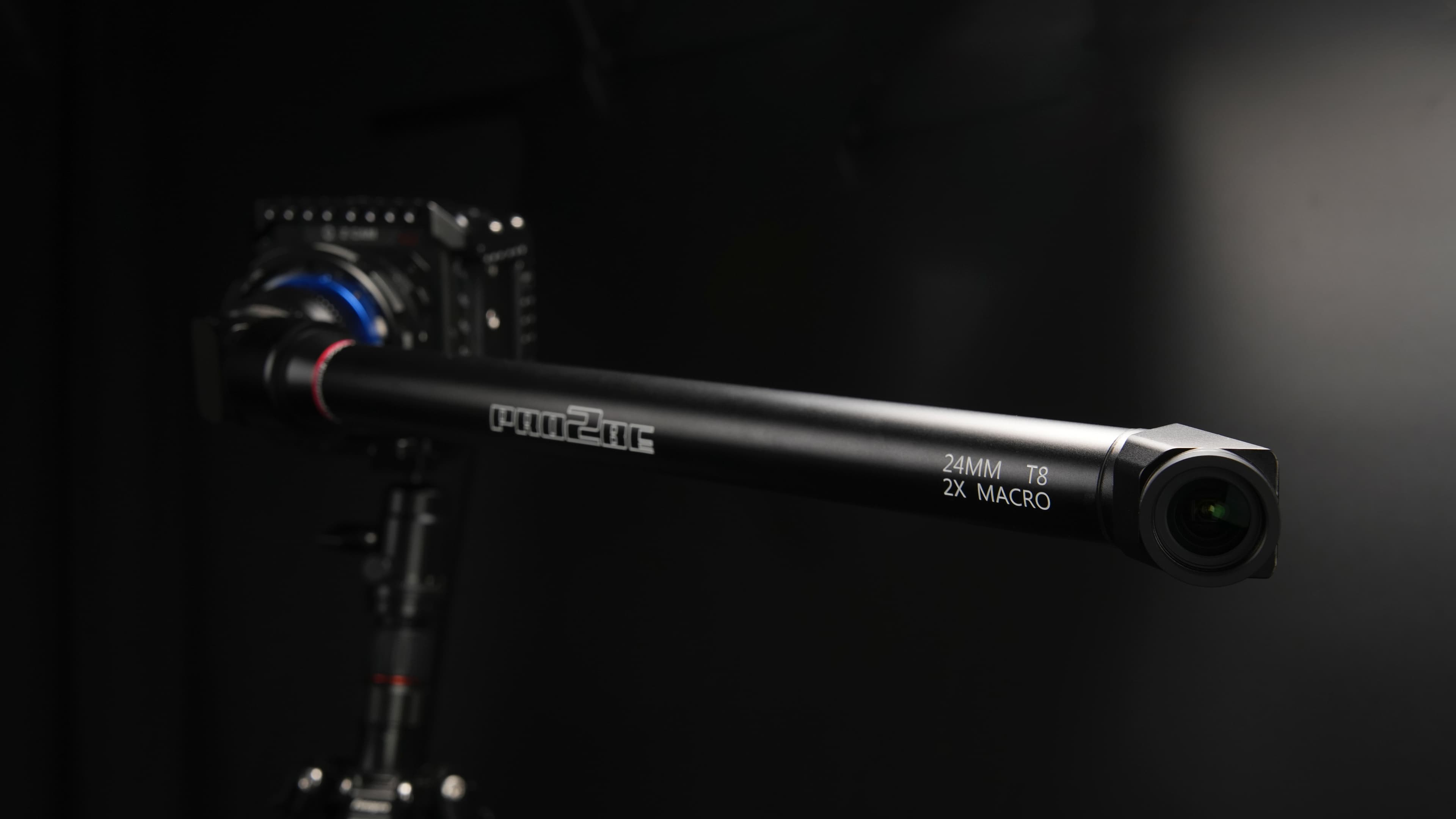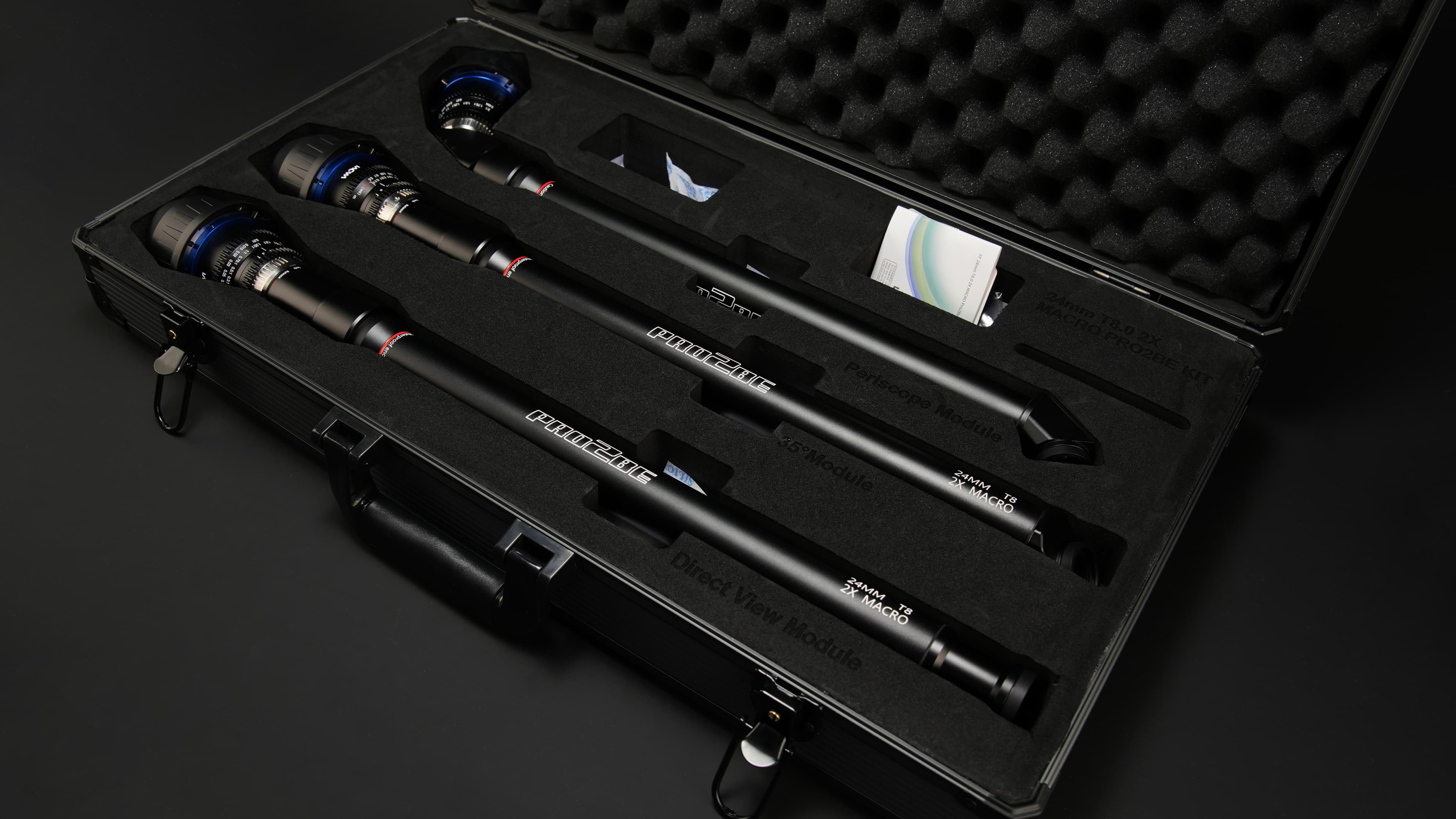Laowa probes even deeper with 24mm T8 2X Macro Pro2be, and it's a CINE LENS
The original Laowa macro probe lens was bizarre enough, but this takes it to the next level (or new depths)

Imagine a full frame 24mm 2x macro lens on a stick, with direct view, 35-degree angle and periscope view versions. The Laowa 24mm T8 2X Macro Pro2be is like a cinematic version of an inspection camera, going places where regular lenses can't go but with a much higher level of quality and control than even the best borescopes.
At first glance, this might look like some kind of optical novelty, but the Laowa Pro2be is a unique and specialised filmaking tool aimed at serious productions. This is reflected in the price, which is $8,499 for the three-lens set (about £6680/AU$13300) or $2849-3349 for the individual lenses (about £2240-£2630 or AU$4460-AU$5240).
If you think that's a lot, just imagine the optical complexity of these probe lenses. In fact. you don't need to, because we can tell you. They use an incredible 33 elements in 24 groups (34 elements in 25 groups for the Periscope View lens). That must be some kind of a record.
With regular macro lenses, you're limited by how close you can get a big and bulky camera and lens combo to your subject, and capturing tiny creatures in confined spaces just isn't possible.
That's the problem the Pro2be is designed to solve. It has a longer probe length than the original design, and with up to 36.6cm waterproof length at the business end, so underwater filming is no problem.
That's not all, even the best macro lenses (though not all) tend to max out at a 1:1 'life size' magnification, but the Pro2be goes up to 2x.
As Laowa points out, it's not just for static macro shots but can also be used for dramatic POV 'fly-through' filming in otherwise impossible spaces. This is something even the best cine lenses can't do when they're fixed to a camera or a bulky rig.

Laowa says its new probe lens isn't just longer than the original, but boasts significant improvements in image quality from its three lenses, and they all offer a T8 maximum aperture almost 2 stops faster than the first version, for more effective high-speed filming and more depth of field control.
All of the lens control takes place at the camera end, thankfully, which also features 360-degree rotation for the probe. Arri PL, Canon EF, Canon RF, Nikon F, Nikon Z, Sony E, L mounts are available, and Laowa says swapping mounts is a simple process, so you can use the Pro2be with different cameras on the same shoot.

Laowa 24mm T8 2X Macro Pro2be specifications
Format: full frame
Lens mounts: Arri PL, Canon EF, Canon RF, Nikon F, Nikon Z, Sony E, L mount
Focal length: 24mm
Aperture range: T/8-40
Diagonal angle of view: 85°
Aperture blades: 10
Min working distance: 4mm
Max magnification: 2x
Focus throw: 150°
Focusing: Manual
Direct View lens: 33 elements in 24 groups, 30.4 x 507mm, 1038g, $2849
35° View lens: 33 elements in 24 groups, 30.4 x 500mm, 1024g, $3149
Periscope View lens: 34 elements in 25 groups, 30.4 x 500mm, 1068g, $3349
We can see the Laowa 24mm T8 2X Macro Pro2be being especially interesting to natural history filmmakers, both as a three-lens set for $8,499 / £8,099 - or as individual direct view, 35° or periscope view versions for $2849, $3149, and $3349 respectively.
Get the Digital Camera World Newsletter
The best camera deals, reviews, product advice, and unmissable photography news, direct to your inbox!

Rod is an independent photography journalist and editor, and a long-standing Digital Camera World contributor, having previously worked as DCW's Group Reviews editor. Before that he has been technique editor on N-Photo, Head of Testing for the photography division and Camera Channel editor on TechRadar, as well as contributing to many other publications. He has been writing about photography technique, photo editing and digital cameras since they first appeared, and before that began his career writing about film photography. He has used and reviewed practically every interchangeable lens camera launched in the past 20 years, from entry-level DSLRs to medium format cameras, together with lenses, tripods, gimbals, light meters, camera bags and more. Rod has his own camera gear blog at fotovolo.com but also writes about photo-editing applications and techniques at lifeafterphotoshop.com
